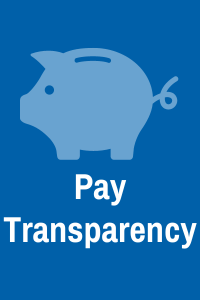 As an independent recruiter, success in this industry requires more than just finding the right candidates for your clients. It also involves investing in your business to ensure long-term growth and profitability. One key aspect of this is understanding the difference between recruiting expenses and investments. In this blog post, we will explore why it’s important to invest in not only recruiting tools and technology, but also branding and marketing, as well as networking and learning opportunities such as recruitment conferences.
As an independent recruiter, success in this industry requires more than just finding the right candidates for your clients. It also involves investing in your business to ensure long-term growth and profitability. One key aspect of this is understanding the difference between recruiting expenses and investments. In this blog post, we will explore why it’s important to invest in not only recruiting tools and technology, but also branding and marketing, as well as networking and learning opportunities such as recruitment conferences.
Recruiting Investments:
- Recruiting Tools and Technology: Many recruiters view expenses such as job board subscriptions or advertising costs as necessary costs of doing business. While these expenses are indeed crucial for attracting candidates and clients, it’s important to shift your mindset from viewing them as mere costs to seeing them as investments in the future success of your business. By investing strategically in tools and technology that streamline your processes and make you more efficient, you can save time and resources in the long run.
- Branding and Marketing: Building a strong brand for your recruiting business is essential for standing out in a crowded market. Investing in branding activities such as creating a professional website, developing a logo and brand messaging, and engaging in social media marketing can help you attract top talent and clients. By investing in your brand, you are not only increasing your visibility but also building credibility and trust with potential stakeholders.
- Networking Opportunities: Attending recruitment conferences and networking events can be a valuable investment for independent recruiters. These events provide opportunities to connect with industry peers, learn about the latest trends and best practices, and build relationships that can lead to new business opportunities. By investing time and resources into attending these events, you can expand your network, gain new insights, and stay ahead of the competition.
The Importance of Long-Term Planning
When it comes to investing in your recruiting business, it’s important to take a long-term view. Instead of focusing solely on short-term gains or cost-cutting measures, think about how each investment will contribute to the overall growth and sustainability of your business over time. By making strategic investments in areas such as technology, branding, marketing, and networking, you are setting yourself up for success both now and in the future.
Measuring ROI
As with any investment, it’s important to track the return on investment (ROI) of your recruiting expenses. Keep detailed records of how much you are spending on various tools and activities, as well as the results they are generating for your business. Analyze this data regularly to identify areas where you can optimize spending or reallocate resources for better outcomes. By measuring ROI effectively, you can ensure that your investments are paying off in terms of increased revenue, improved efficiency, and overall business growth.
In conclusion, investing in your recruiting business is essential for achieving long-term success as an independent recruiter. By shifting your mindset from viewing expenses as necessary costs to seeing them as strategic investments in the future of your business, you can maximize your recruiting ROI and set yourself apart from competitors. Whether it’s investing in tools and technology to streamline processes or branding activities to build credibility with clients and candidates, every dollar spent should be seen as an opportunity for growth. By taking a proactive approach to investing in areas such as branding, marketing, networking opportunities like recruitment conferences -you are laying the foundation for a successful recruiting career that will stand the test of time.








